
(c) Philip Gibbs
LightMill animation by Torsten Hiddessen
| Line driven winds |
|
| Which objects? |
|
||
|
| Why study winds from massive stars? |
|
Stellar Wind
| Recent interests in line driven hydrodynamics |
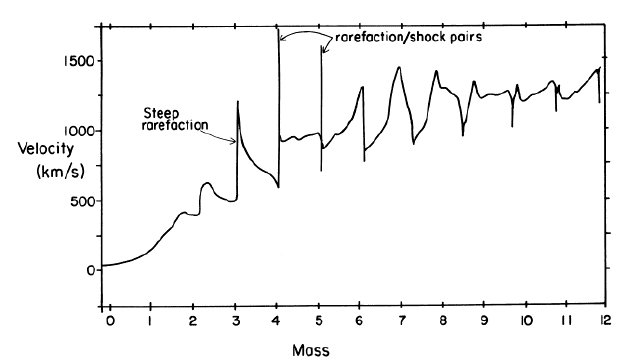 |
Shocks from line driven instability Owocki et al. 1988 ApJ |
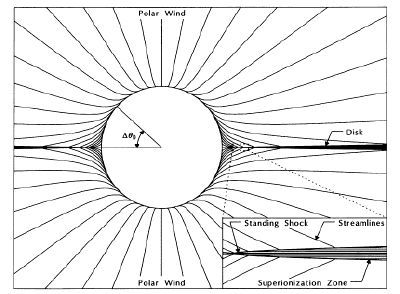 |
Wind compressed disks Bjorkman & Cassinelli 1993 ApJ |
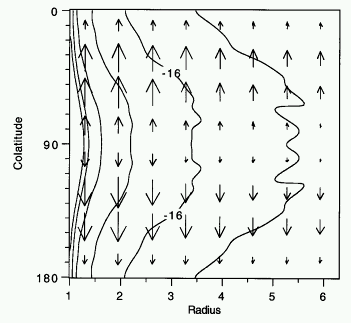 |
Disk inhibition Owocki et al. 1996 ApJ |
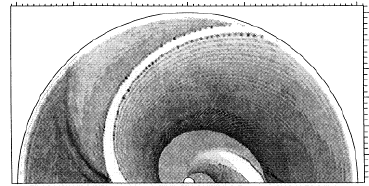 |
Corotating interaction regions Cranmer & Owocki 1996 ApJ |
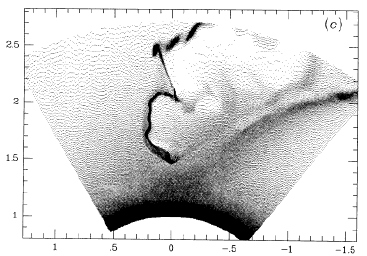
|
High-mass X-ray binaries Blondin et al. 1990 ApJ |

|
Quasar winds Murray et al. 1995 ApJ |
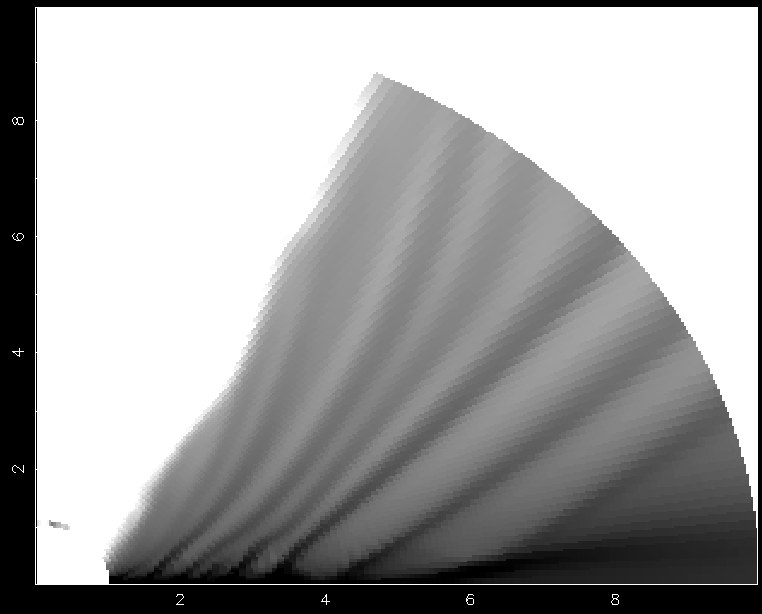
|
Disk winds Feldmeier & Drew 2000 MNRAS |
| Line force causes new wave type |
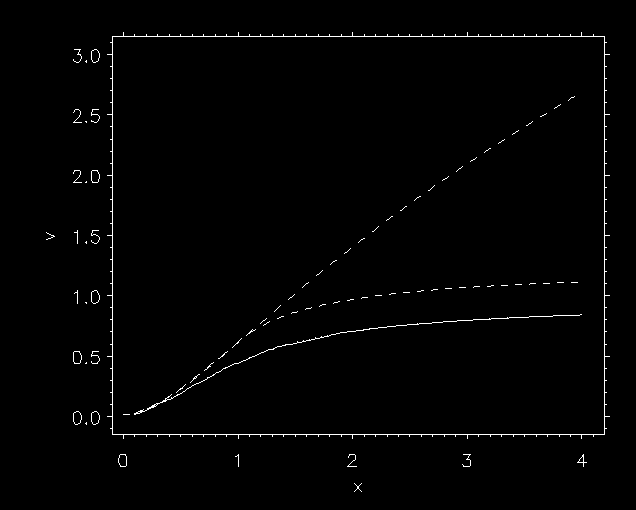
Abbott waves (1980):
a radiative wave mode
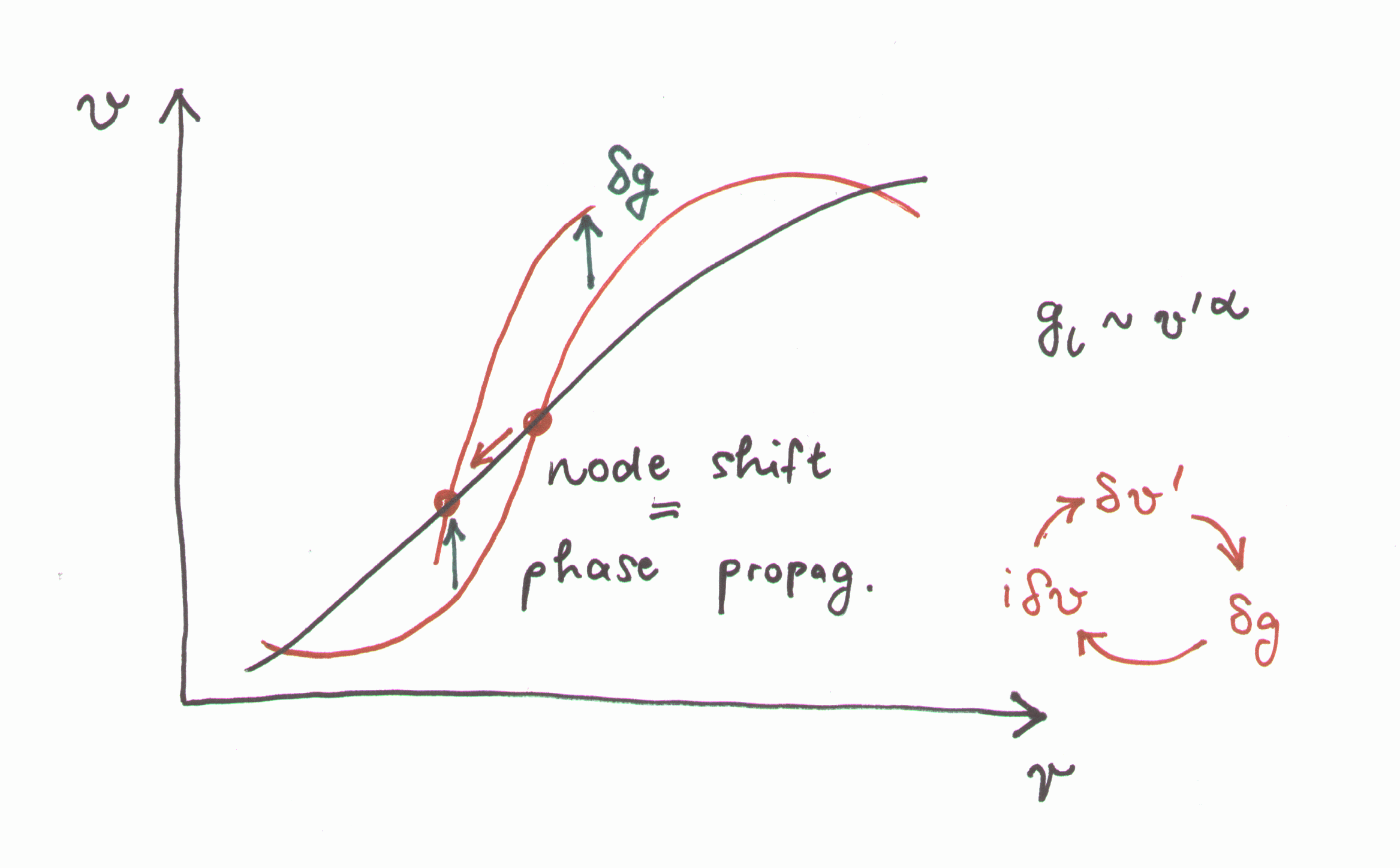
|
SSF: Abbott waves and 1A. DE-SHADOWING INSTABILITY |
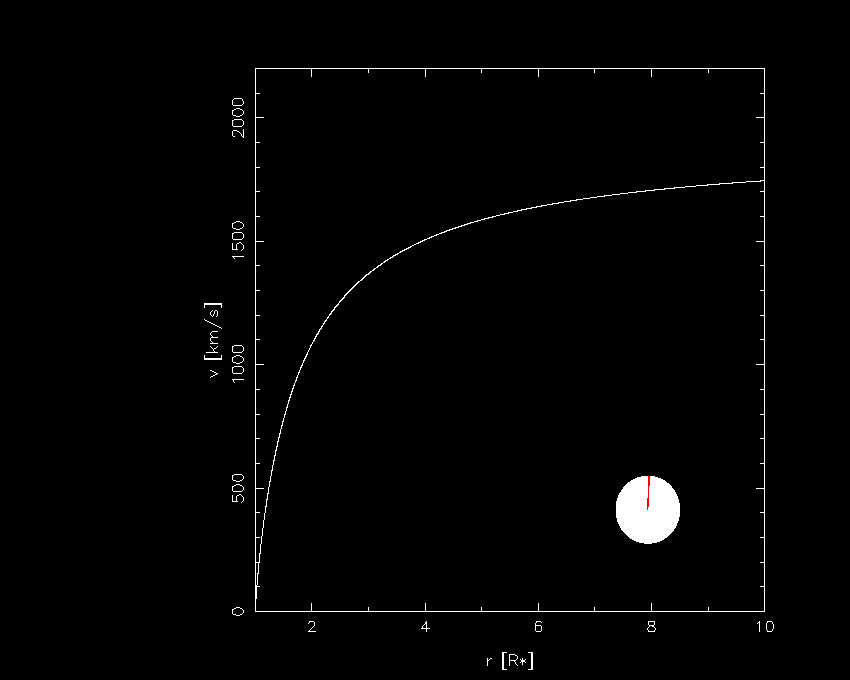
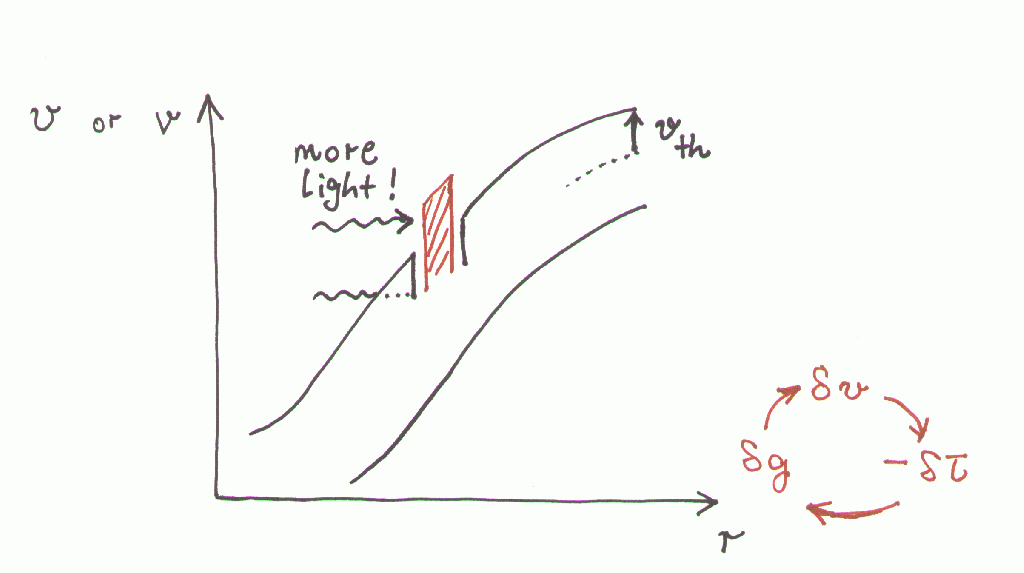
| long scale limit: Abbott waves (1980 ApJ) | ||
| short scale limit: instability (Carlberg 1980 ApJ) | ||
|
| Wind structure from numerical hydrodynamics |
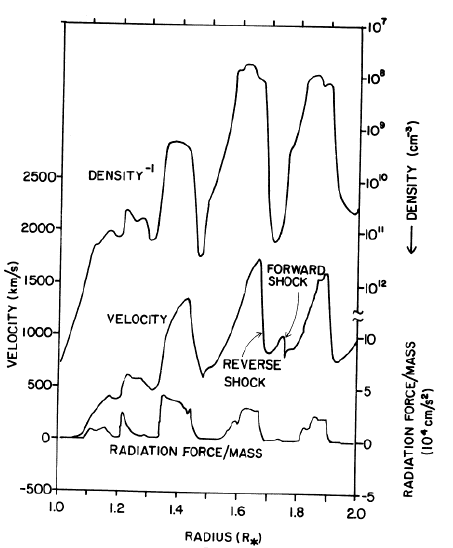
Owocki, Castor & Rybicki, 1988 ApJ
SSF
with S=0
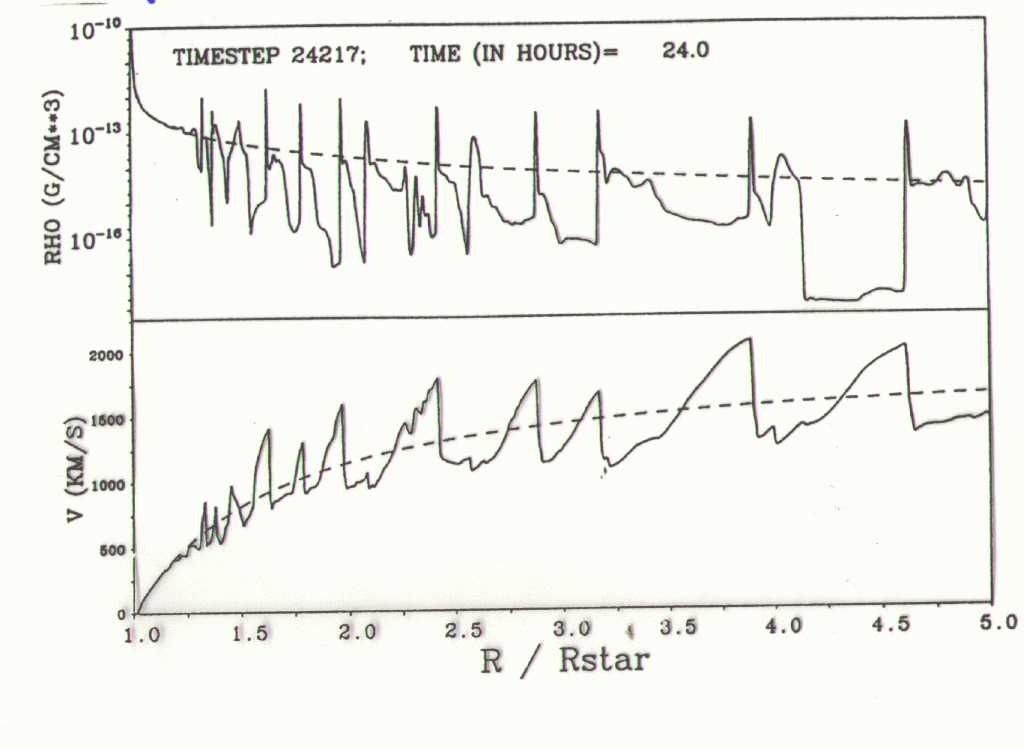
Feldmeier, 1995 A&A
SSF
|
|
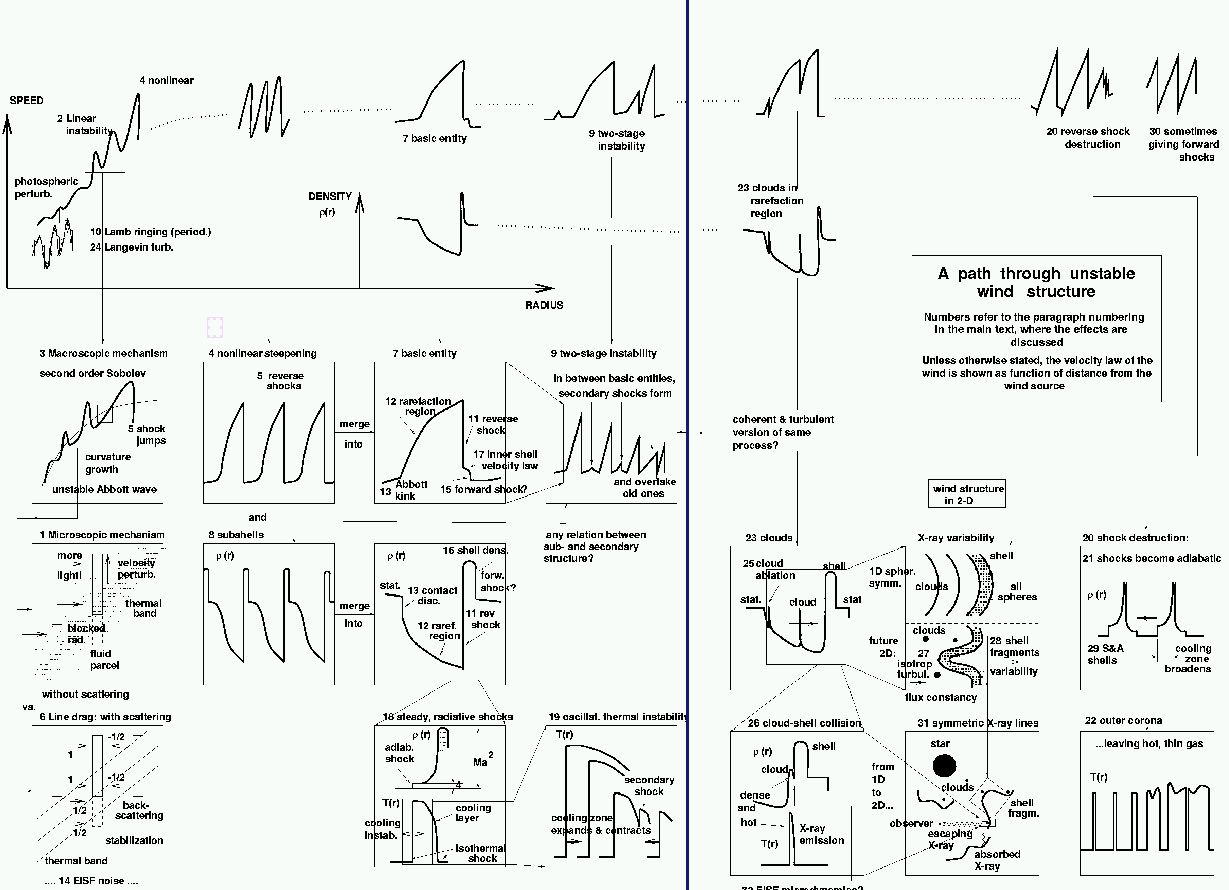
| 1B. X-RAYS AND CLOUDS |
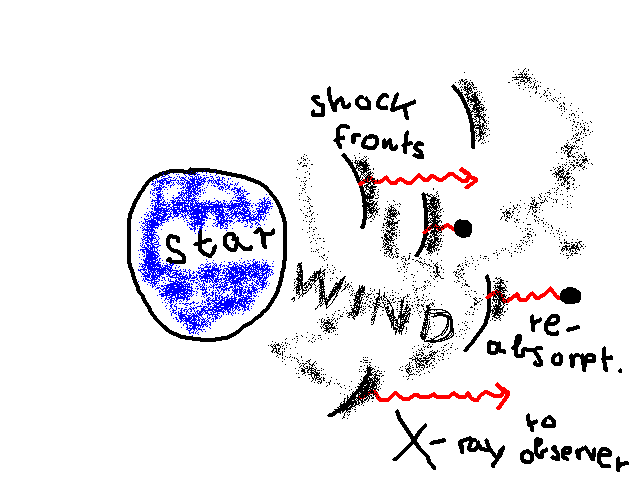
wind shocks as
X-ray sources in the wind
Lucy & White 1980 ApJ
Lucy 1982 ApJ
| First problem |
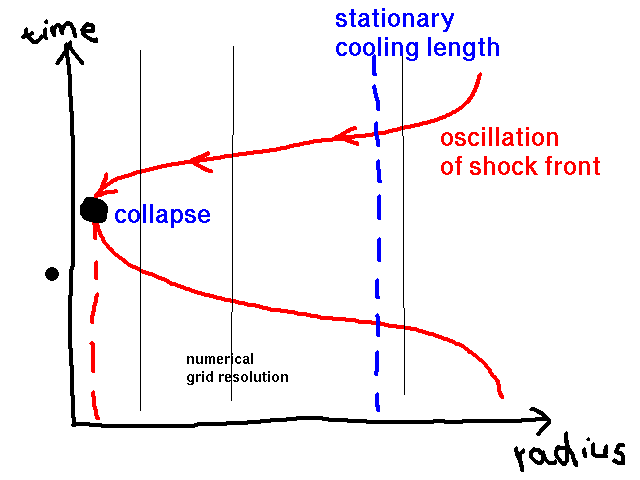
|
Thermal instability Change cooling function at low T (F. 1994 Diss) |
| Second problem |
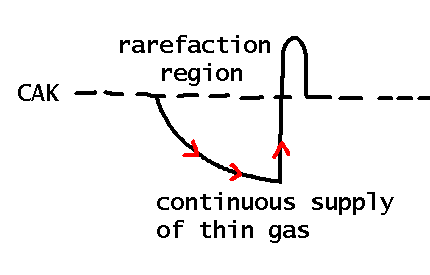
|
density too small. Not enough X-rays
(Hillier et al. 1994 A&A) |
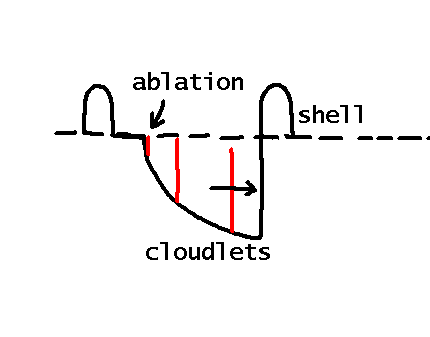
|
solution: we propose
(SSF) fast & dense cloudlets collide with shells (Feldmeier et al. 1997 A&A) |
| Wind model for zeta Ori, including energy transfer |
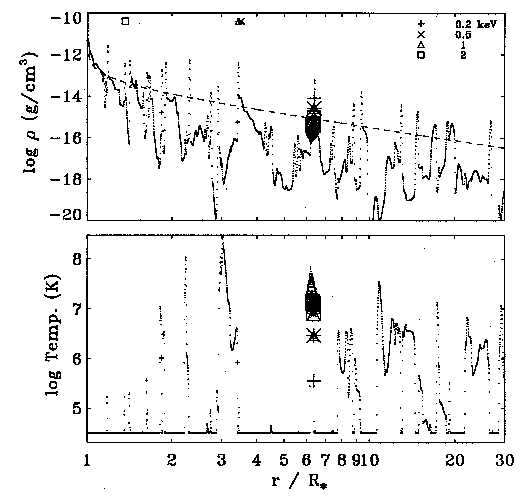 |
single wind location emitting X-rays |
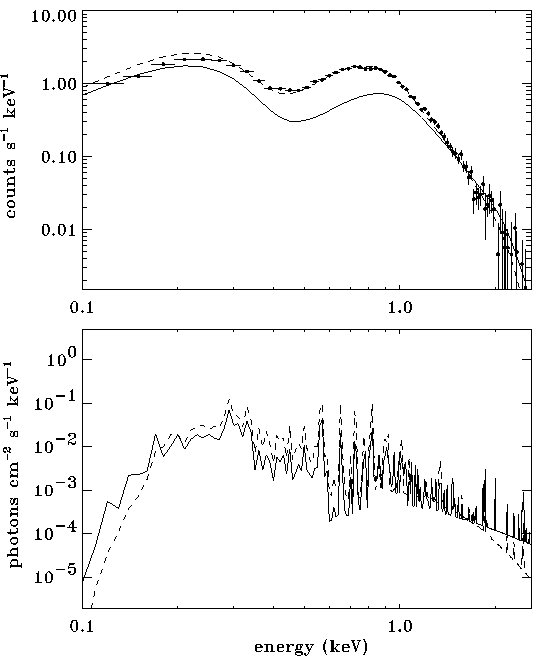 |
X-ray spectrum, compared to ROSAT data |
| Cloud-shell collisions |
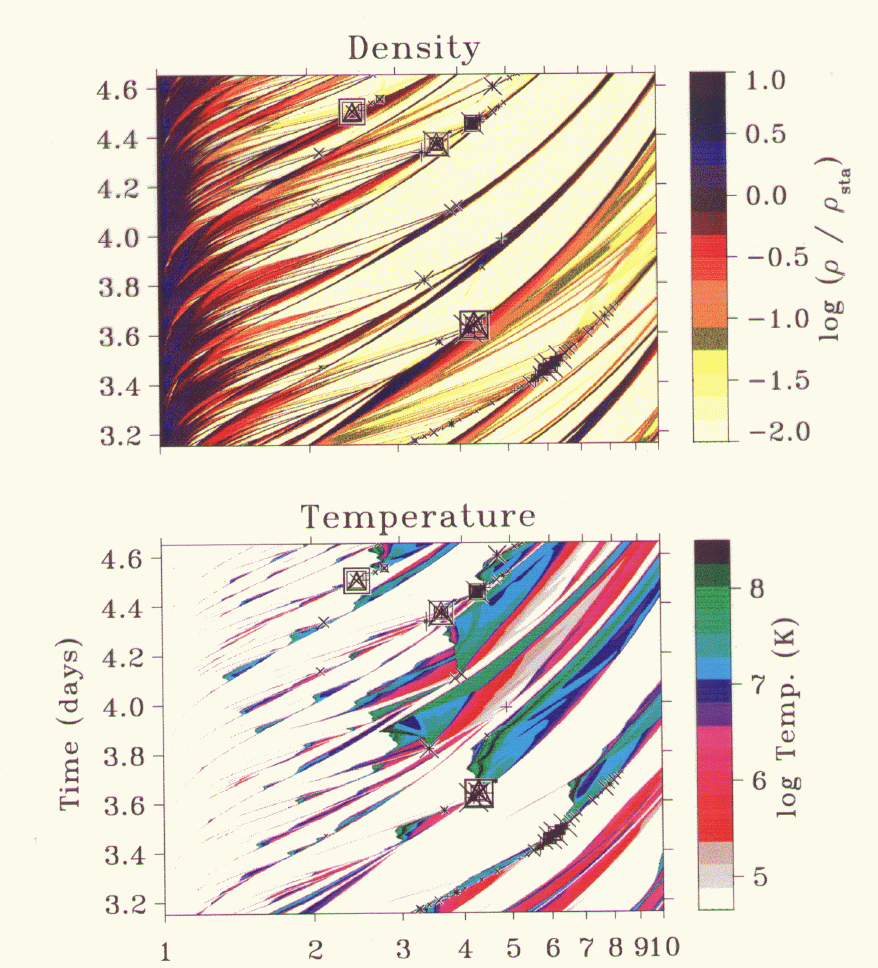
SSF
|
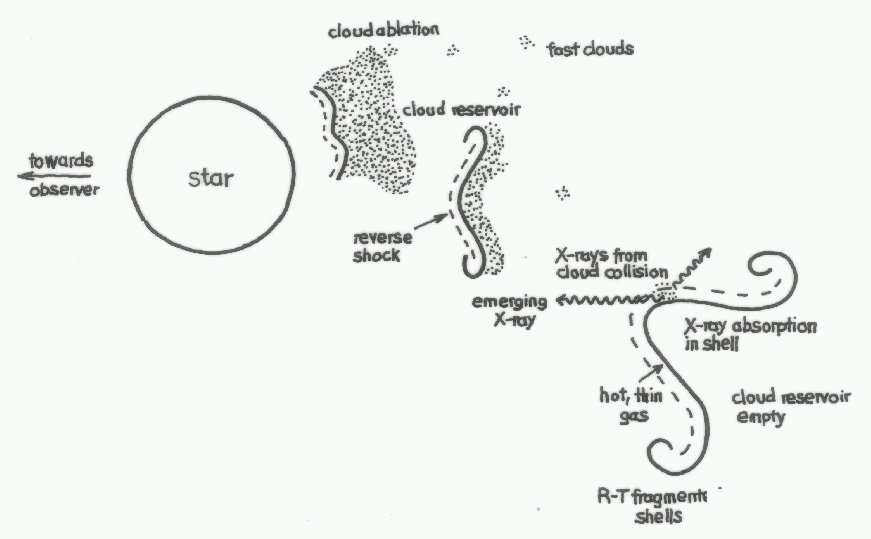
| 2. DISK WINDS |
Winds from accretion disks in Protostars, Cataclysmic Variables, and Quasars
| Shlosman et al. 1985. Disk radiation launches quasar wind. Central engine shielded by absorption in disk atmosphere. |
| Murray et al. 1995. Central engine shielded by hitchhiking gas. |
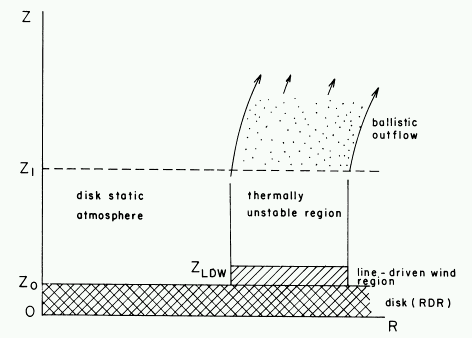

DISK WIND MOVIE
Results agree well with semi-analytical model
(Feldmeier & Shlosman 1999a,b ApJ)

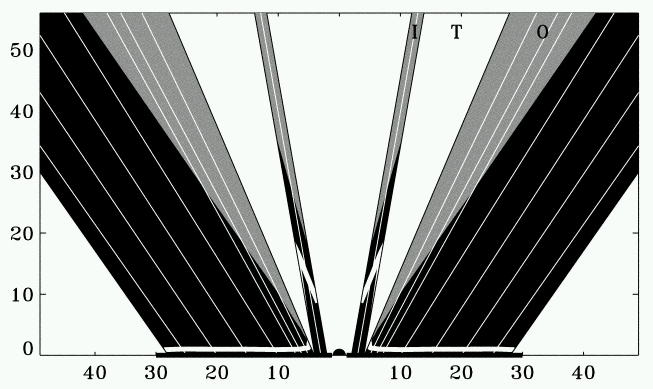
| Traditionally: disk winds magnetically driven (YSOs; quasars?) | Here: radiation driven (CVs; quasars?) | try now: combination |
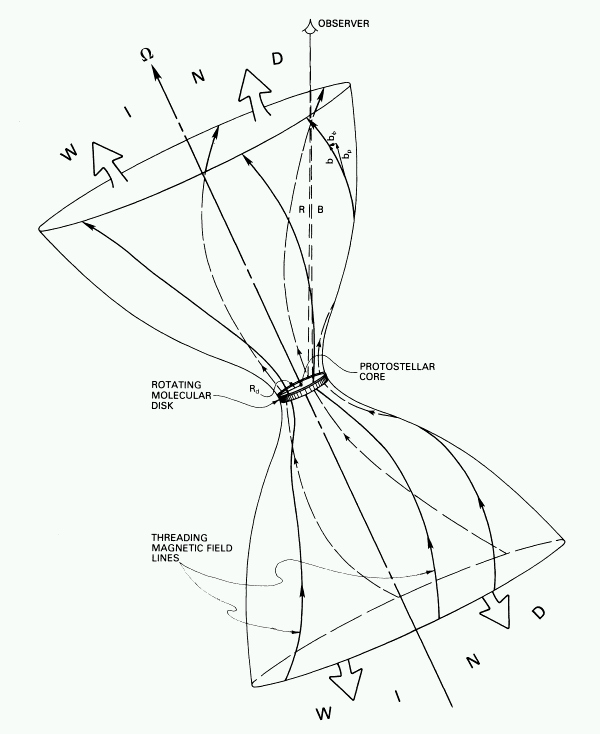
Hour-glass model of
poloidal field amplification
Norman and Pudritz 1986 ApJ
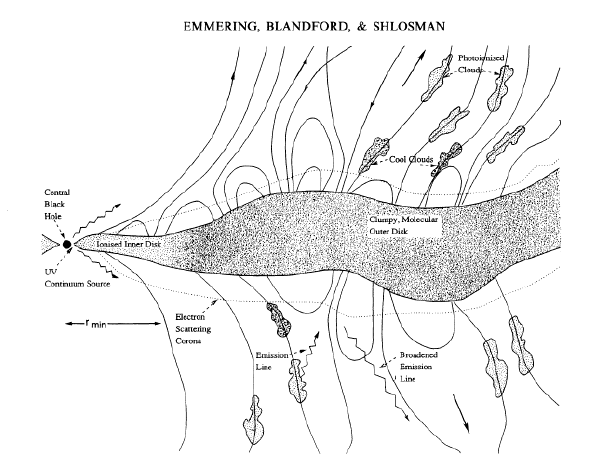
after Blandford & Payne 1982 MNRAS
|
||
| Here, strong toroidal magnetic fields occur. | ||
|
||
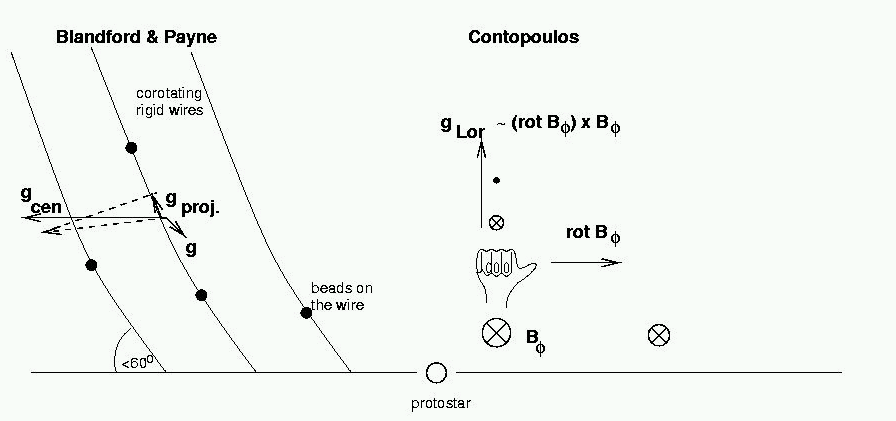 |
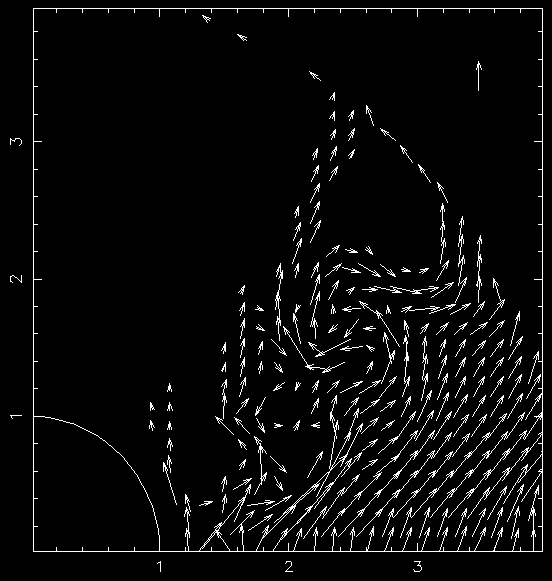
|
Vortex sheet unit arrow |
| A poloidal-toroidal interaction |
|
Vortex sheet in poloidal field
Poloidal eddies carry toroidal field to large height Lorentz force (toroidal field) drives enhanced mass loss |
| 3. ABBOTT WAVES AND RUNAWAY |
Time-averaged SSF solutions, or
Steady, stable SOB solutions
| Question |
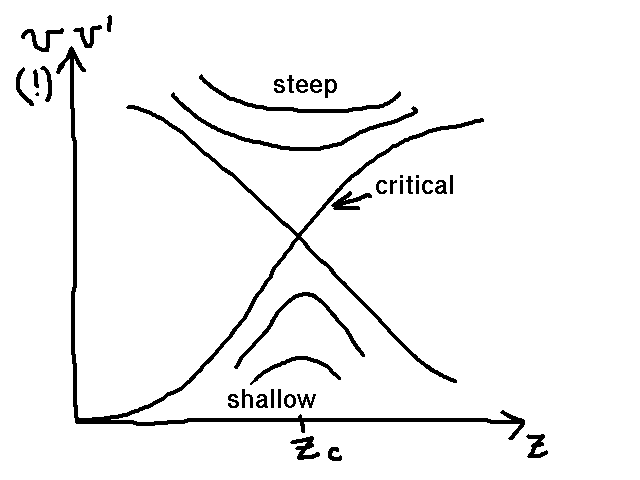
Why does the wind adopt the critical solution
out of an infinite solution variety?
Castor et al. 1975 ApJ,
Abbott 1980 ApJ:
shallow solutions do not reach infinity
Steep solutions do not reach photosphere
-> mixed sS or critical
 Artificial convergence to sS
CAK solution:
Artificial convergence to sS
CAK solution: 1. outflow boundary conditions
2. NO Abbott time step
(Feldmeier, Shlosman & Hamann 2002 ApJ)
SOB
| Abbott wave runaway |
Strange Abbott wave dispersion:
(Feldmeier & Shlosman 2000, 2002 ApJ) |
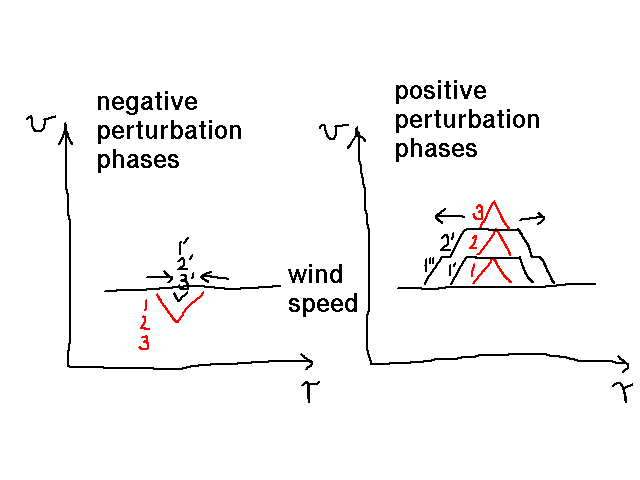
SOB
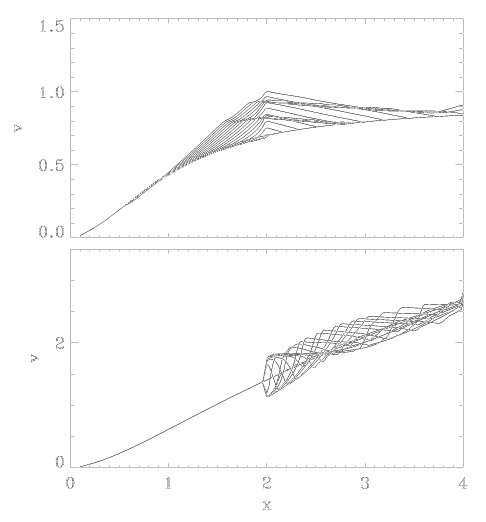
Runaway of shallow solution
The critical wind is stable

Perturbation amplitude of 5% creates Abbott waves
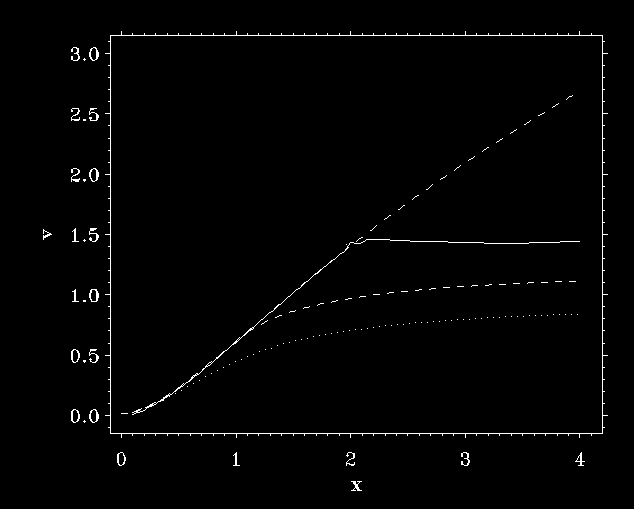
The same perturbation at 15% amplitude causes runaway
SOB
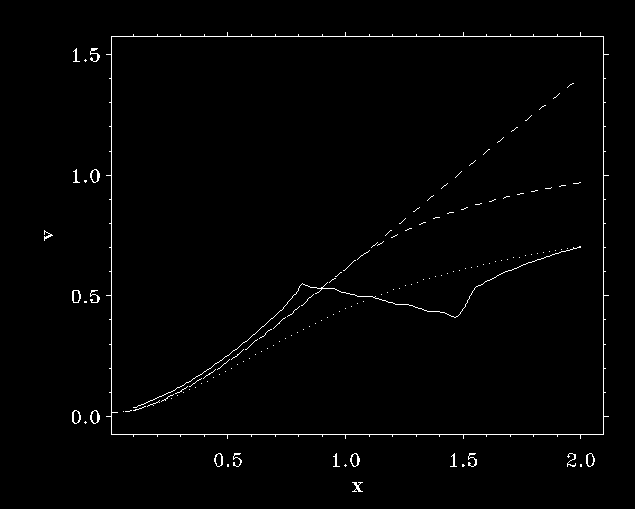
A perturbation below the critical point causes
stationary overloaded solution
| Summary |
|
|
|
|
|